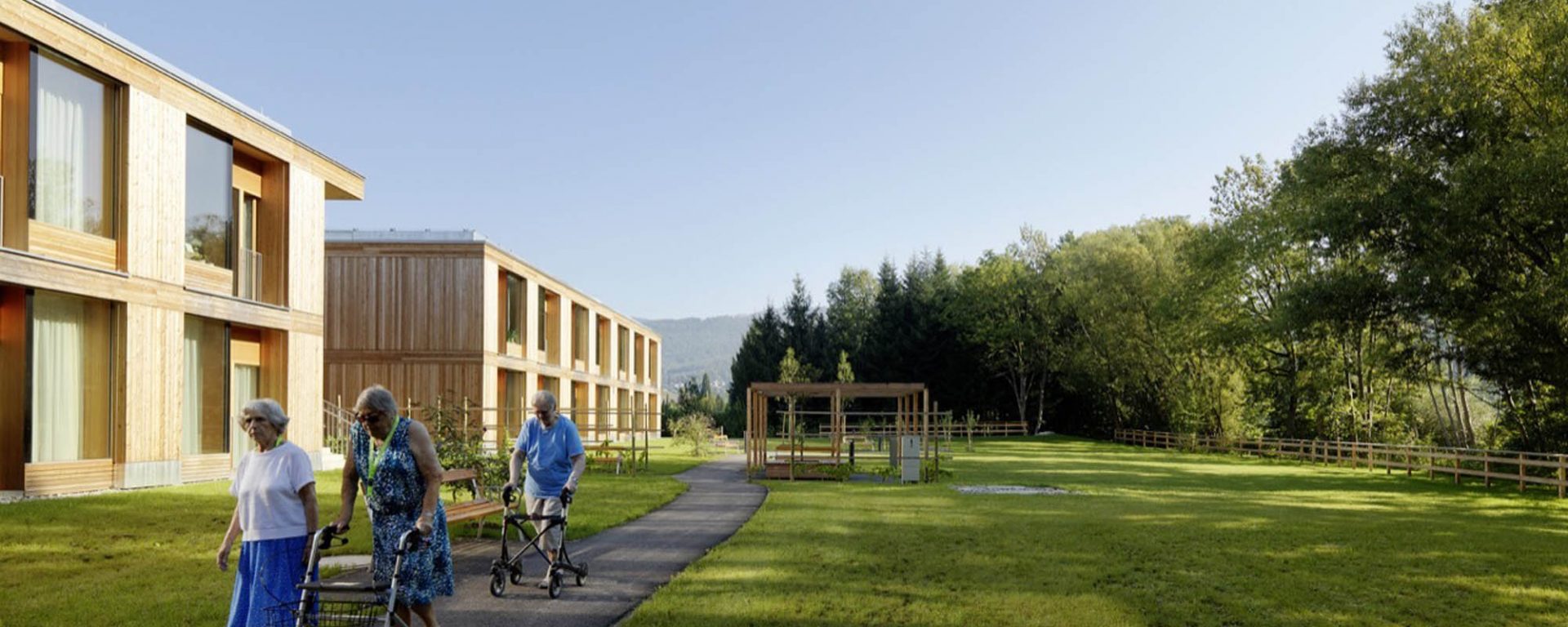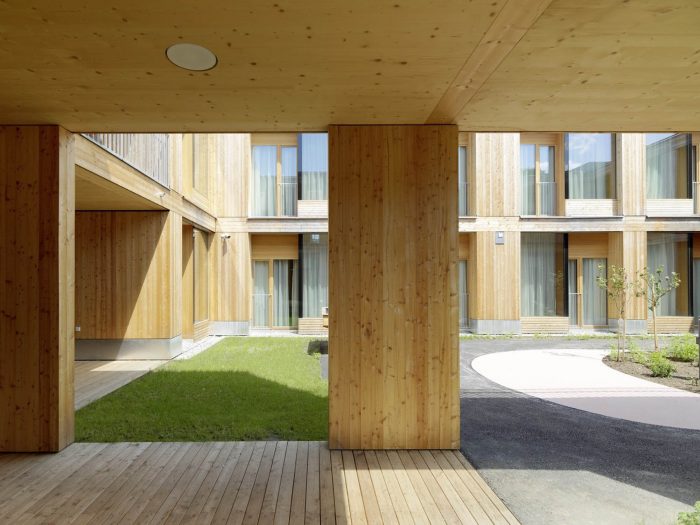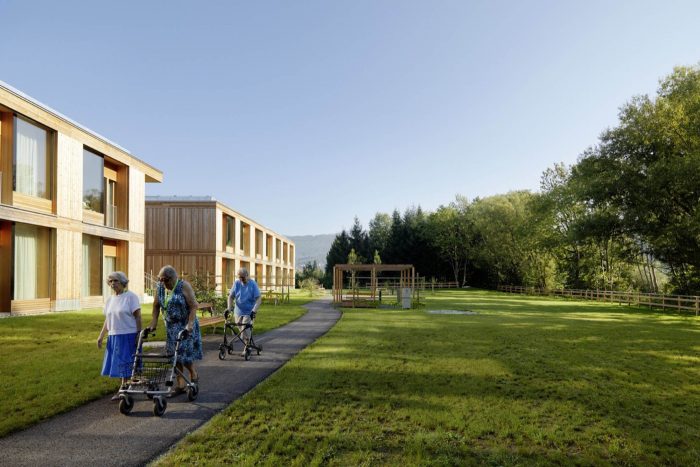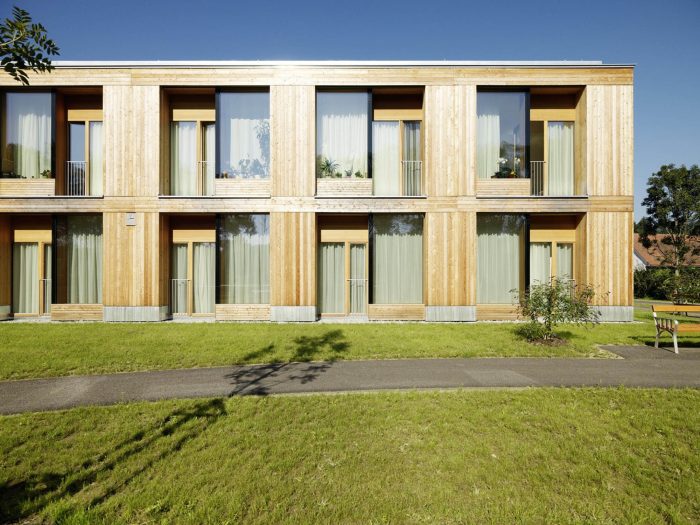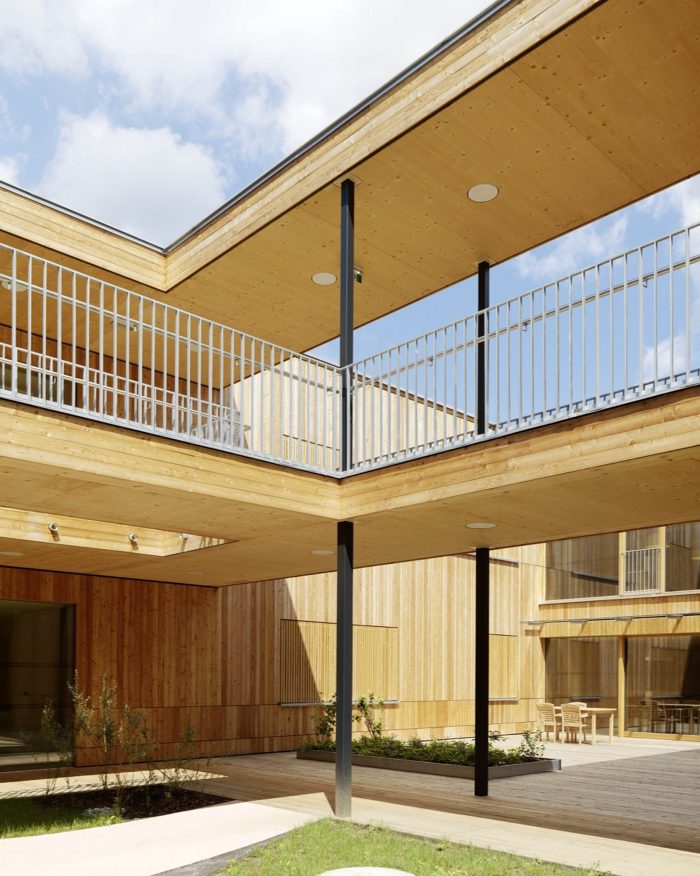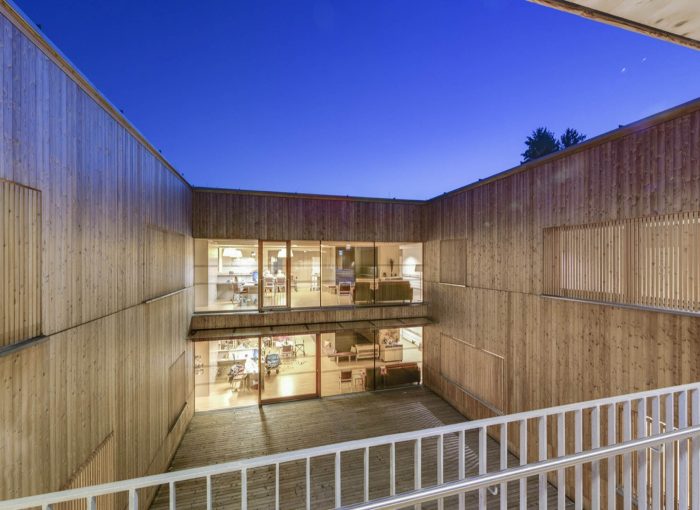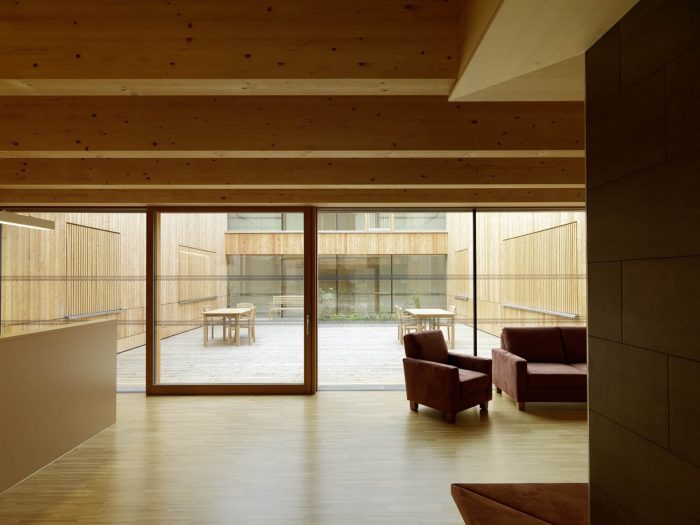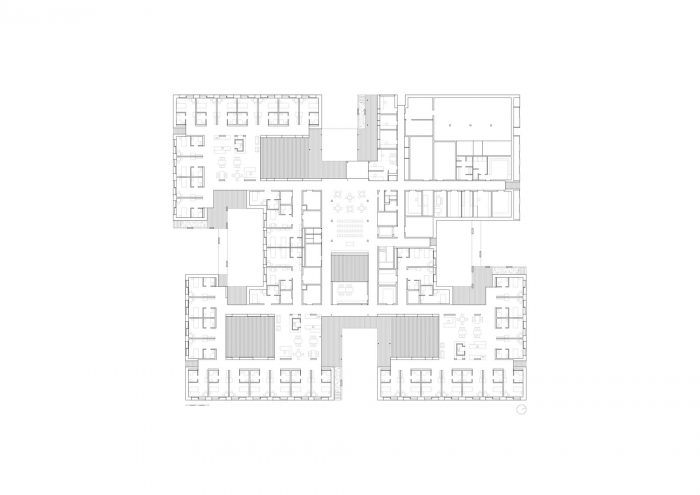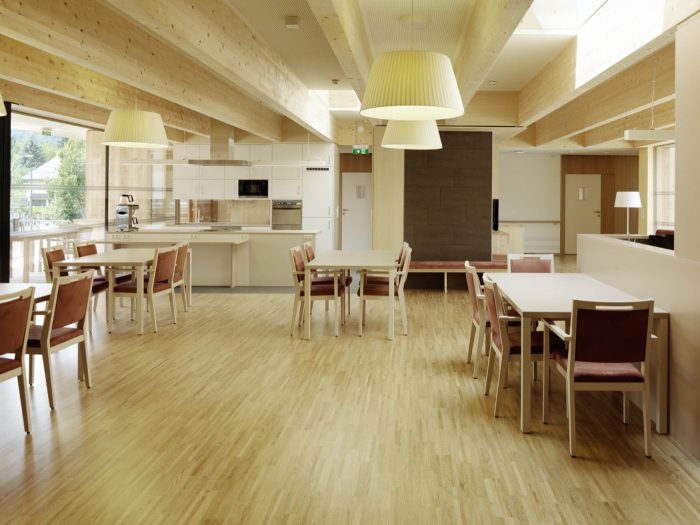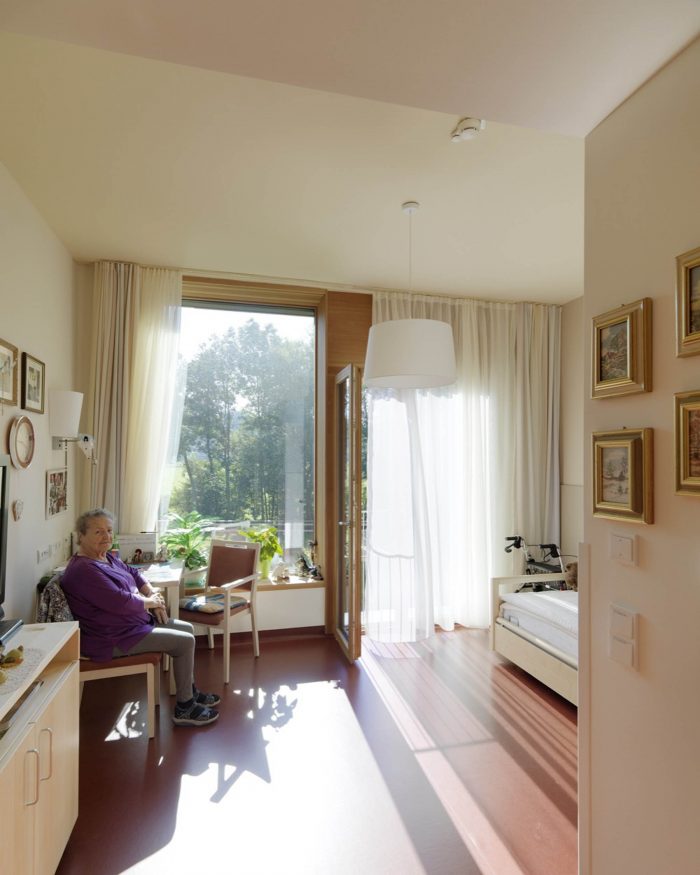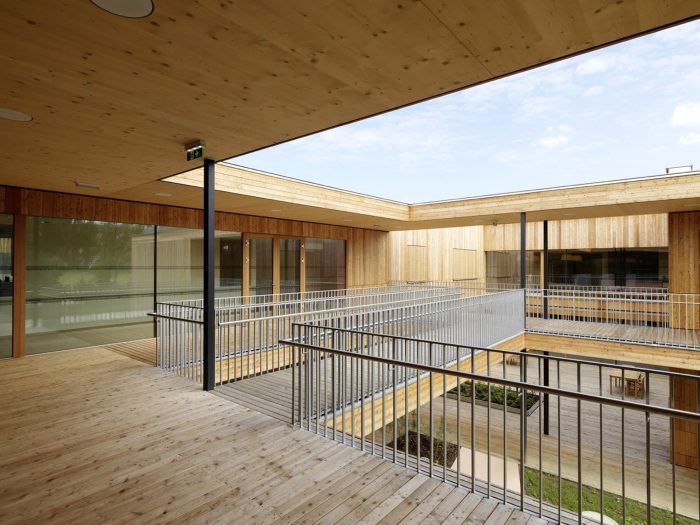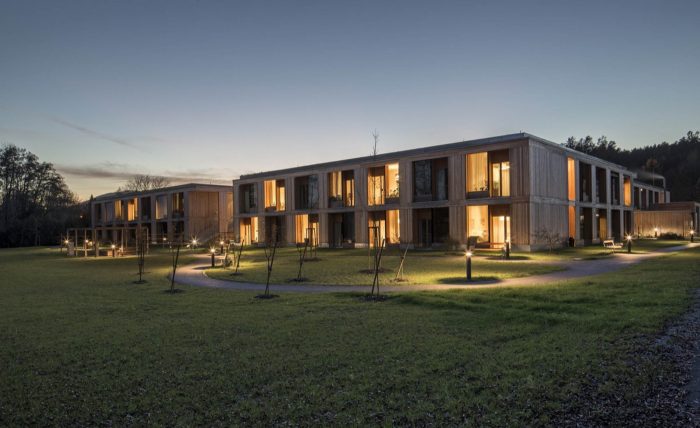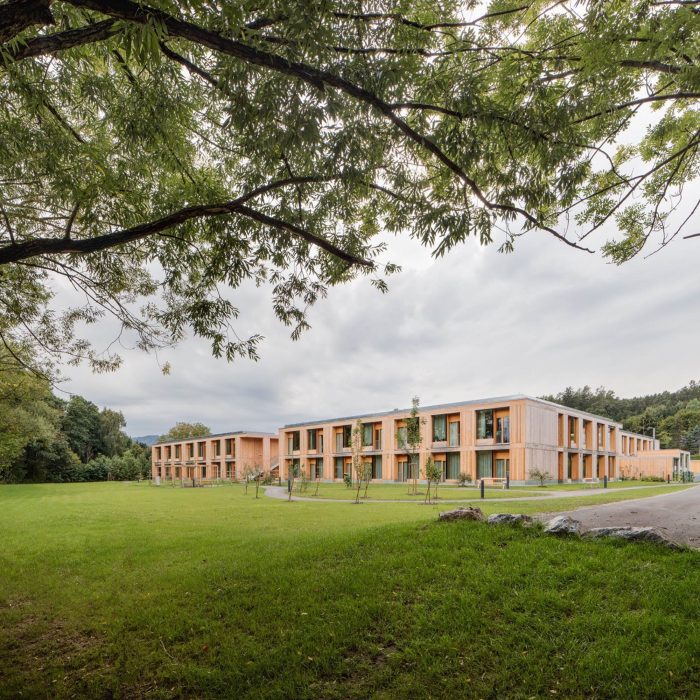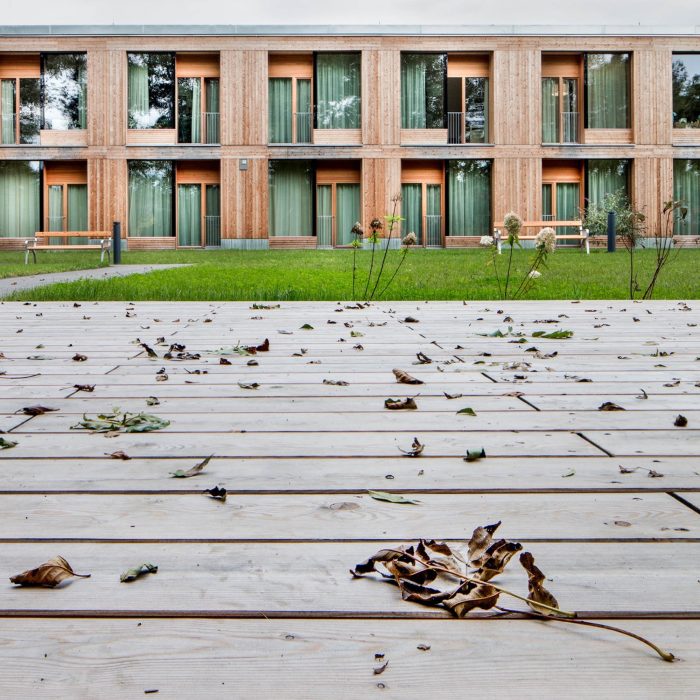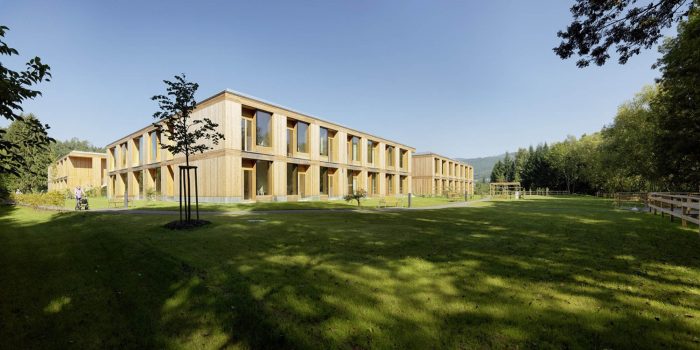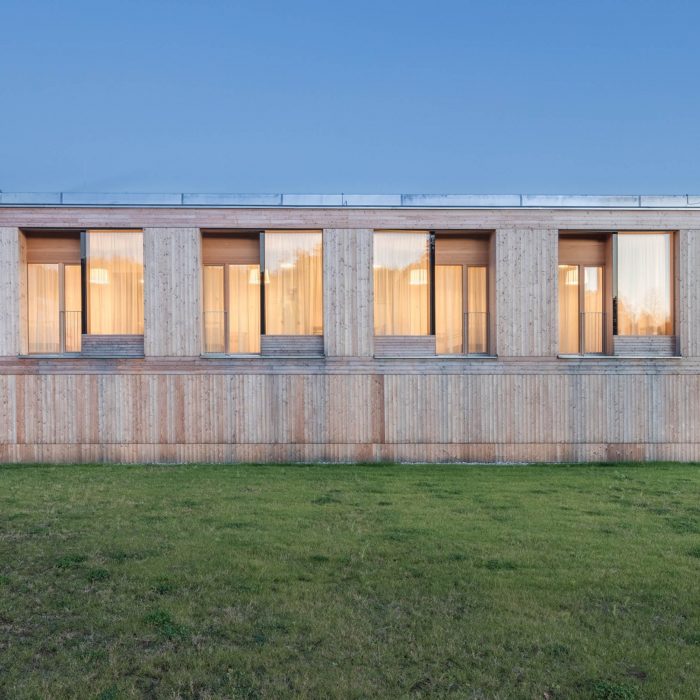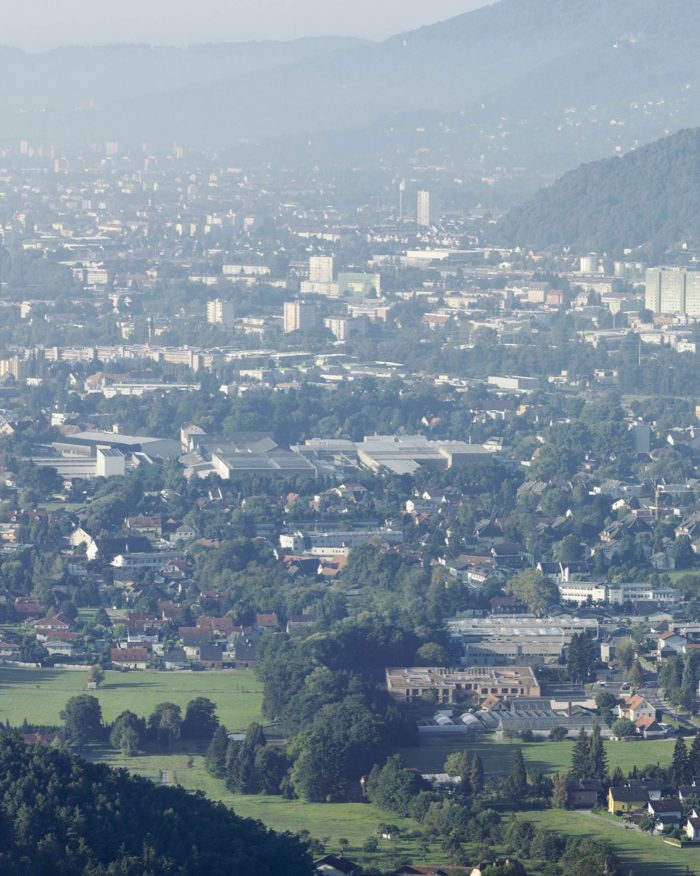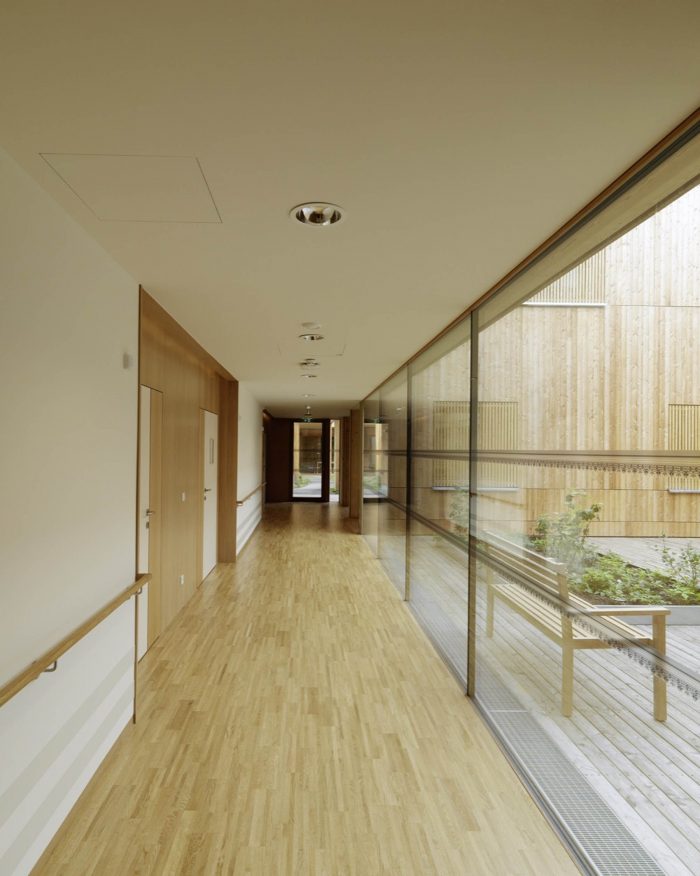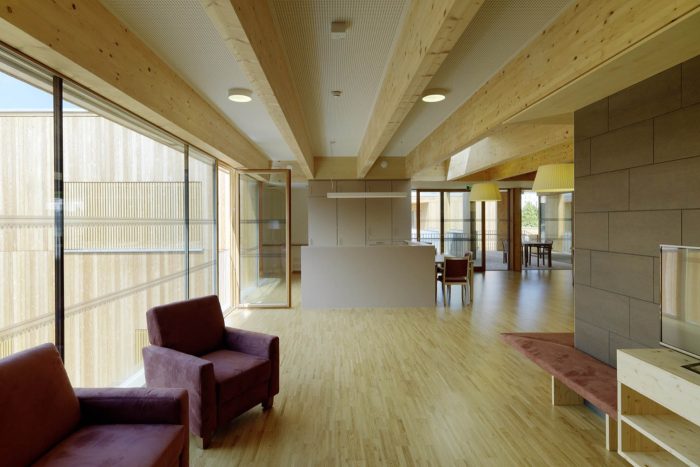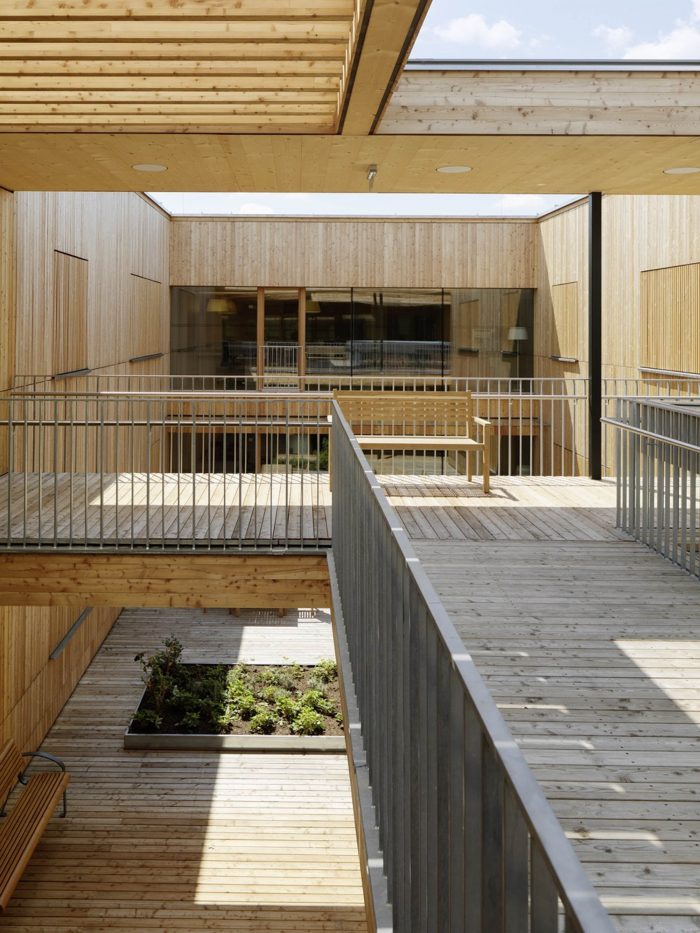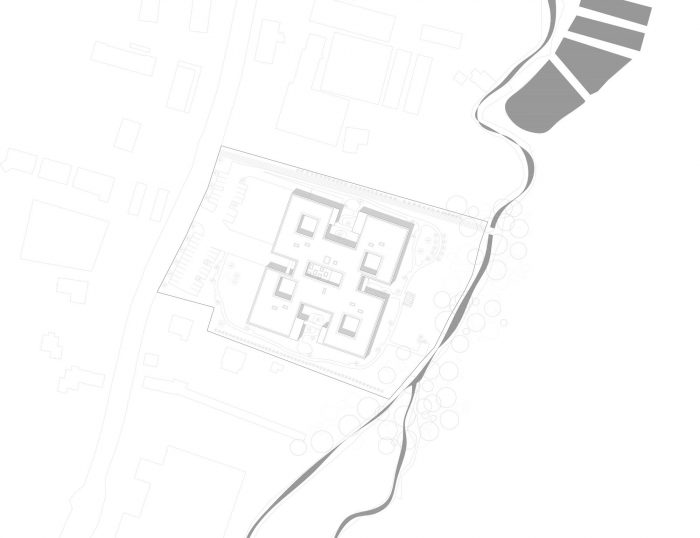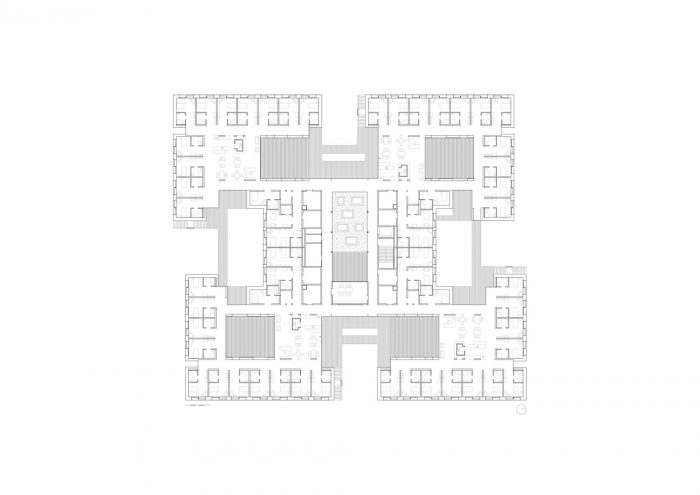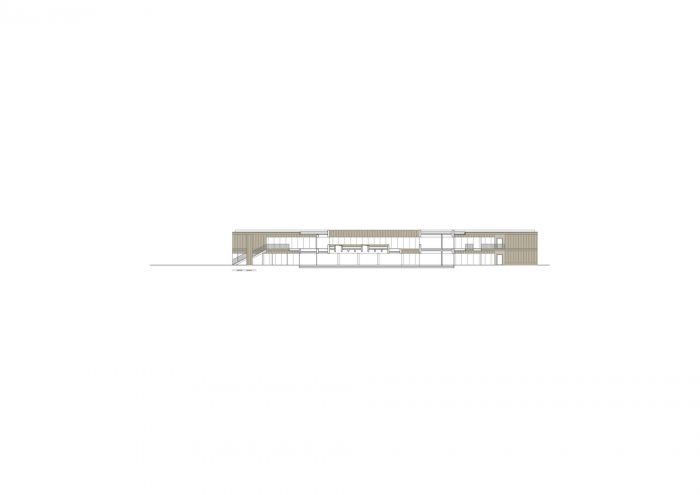在格拉茨的Statteggerstraße,在Andritzbach小溪附近的一块公园式的土地上,建造了一座可容纳105名老人的养老院。
A residential care home for 105 elderly residents has been constructed on Statteggerstraße in Graz on a park-like plot in the immediate vicinity of the Andritzbach brook.
被动式房屋没有地下室,这是因为地面条件具有挑战性,而且它位于安德里茨洪水区。它是一个复合结构,具有可控的家用通风功能。承重的天花板和墙体由混凝土制成,而所有其他结构元素都是木头。外立面元素,每个延伸到两个房间,都是预制的,其尺寸由适合运输的最大尺寸决定。
The passive house has no basement due to the challenging ground conditions and because of its location within the Andritz flood zone. It is a composite construction and features controlled domestic ventilation. Load-bearing ceilings and walls are made of concrete while all other structural elements are wood. The façade elements, each extending across two rooms, were prefabricated, their size determined by the maximum dimensions suitable for transport.
这座两层楼的建筑由四翼组成,围绕着一个半公共的 “乡村广场”,设计用于举办各种活动。这里也是有屋顶的前厅、中央护士站、演讲厅、咖啡馆、理发店以及一个开放的中庭的所在地。
The two-storey building consists of four wings arranged around a semi-public “village square”, designed to host various events. This is also the location of the roofed vestibule, the central nurses’ station, an oratory, a cafe, a hairdresser as well as an open, tended atrium.
底层的三个住宅区和顶层的四个住宅区分别容纳了一名护理人员和15名住客,主要是单人间,从而创造了一个易于管理和友好的氛围。每个居住组都有一个大的公共生活区,底层有宽阔的凉亭和分区花园,其中一些适合痴呆症患者使用,顶层有带塔楼走廊的中庭,作为额外的生活区。我们特别注意确保足够的自然光洒满整个建筑。
Three residential areas on the ground floor and four on the top floor host one carer and 15 residents each, primarily in single rooms, thereby creating a manageable and friendly atmosphere. A large common living area for each residential group, wide loggias and zoned gardens, some of which are suitable for dementia patients, on the ground floor and atria with tower galleries on the top floor serve as additional living zones. Special attention has been paid to ensure sufficient natural light floods the entire building.
护士站和辅助房间总是在附近,使工作流程变得高效。建筑物周围有较短和较长的步行道,有不同的视觉参考和宜人的安静区域,确保了多样化的自由活动机会,甚至在设定的治疗课程之外。
Nurses’ stations and secondary rooms are always nearby, making work processes highly efficient. Shorter and longer walks around the building with varying visual references and pleasant quiet zones ensure diverse free movement opportunities, even outside set therapy sessions.
建筑与外部空间的交织被赋予了特别的意义。绿化和开放空间的设计是以护理院的类型为基础,以一系列大小不一、各具特色的花园为基础。花园还形成了通往公园的通道,公园东边是安德里茨巴赫河。一个特别吸引人的休闲空间是通过设计一个木质平台来创造的,这个平台突出于水面,再加上建筑内部和周围可管理的多个区域,创造了一个熟悉而又充满活力的氛围。
The interweavement of the building with the outside space has been assigned particular significance. The green and open space was designed with the typology of the care home in mind and is based on a sequence of gardens which differ in size and character. The gardens also form the passage into the park bordered by the Andritzbach to the east. A particularly attractive space for recreation has been created by designing a wooden platform that juts out over the water which, together with the manifold zones of a manageable scale inside and around the building, generates a familiar yet invigorating atmosphere.
建筑师:Dietger Wissounig Architekten
面积:6950平方米
年份:2015年
照片:Paul Ott、Helmut Pierer
设计团队:Dietger Wissounig, Bettina Gossak-Kowalski, Patrick Steiner, DI Stephan Brugger, Vojka Mocnik, Thomas Wadl
景观 : Dietger Wissounig Architekten ZT GmbH
客户:Gemeinnützige Wohn- u. Siedlungsgenossenschaft Ennstal reg. Gen.m.b.H. Liezen
城市 : 格拉茨
国家:奥地利
Architects: Dietger Wissounig Architekten
Area: 6950 m²
Year: 2015
Photographs: Paul Ott, Helmut Pierer
Design Team:Dietger Wissounig, Bettina Gossak-Kowalski, Patrick Steiner, DI Stephan Brugger, Vojka Mocnik, Thomas Wadl
Landscape:Dietger Wissounig Architekten ZT GmbH
Clients:Gemeinnützige Wohn- u. Siedlungsgenossenschaft Ennstal reg. Gen.m.b.H. Liezen
City:Graz
Country:Austria

